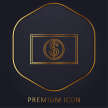
The Curse of the Pharaohs: Explore the Legends Surrounding the Supposed Curses that Afflicted Archaeologists and Explorers who Disturbed Ancient Egyptian Tombs, such as the Curse of King Tutankhamun
The allure of ancient Egyptian history has captivated the world for centuries, with its mysterious tombs, majestic pyramids, and enigmatic hieroglyphics. Yet, for all the wonder and fascination it has inspired, the archaeologists and explorers who sought to unlock the secrets hidden within these tombs often found themselves plagued by legends of curses and misfortune. The most famous of these curses is undoubtedly the Curse of King Tutankhamun, which has sparked countless debates and discussions regarding its authenticity and the possible scientific explanations behind the ill-fate that befell some of those involved in the tomb's excavation. In this essay, we will delve into the rich history of these supposed curses, their origins, and explore the rational and mystical explanations surrounding them.
The fascination with ancient Egypt, which peaked during the 19th and early 20th centuries, led to a period of intense exploration and excavation of Egyptian tombs, including those of the pharaohs. In 1922, British archaeologist Howard Carter, in collaboration with Lord Carnarvon, discovered the nearly intact tomb of Tutankhamun in the Valley of the Kings. The find was monumental, as it was one of the most well-preserved tombs ever unearthed, containing a trove of valuable artifacts and Tutankhamun's famous golden death mask. However, the excitement of this discovery was quickly overshadowed by a series of mysterious deaths and misfortunes that struck those involved in the excavation.
The legend of the Curse of the Pharaohs, which includes the Curse of King Tutankhamun, is rooted in these tragic events. The curse is believed to have been inscribed on the walls of many ancient Egyptian tombs as a warning to deter tomb robbers and desecrators. One of the most famous examples of such a curse comes from the tomb of Pharaoh Tutankhamun, which read, "Death shall come on swift wings to him that toucheth the tomb of the Pharaoh." It was a common belief among the ancient Egyptians that disturbing the resting place of the pharaohs would result in dire consequences, as the tomb was considered a sacred and protected space.
The first hint of the curse's potency came with the death of Lord Carnarvon, who financed the excavation of Tutankhamun's tomb. He died in 1923, a mere five months after the tomb's discovery, reportedly succumbing to an infected mosquito bite. Many attributed his death to the curse, as he was the first to enter the tomb, along with Howard Carter, when it was opened. The newspapers of the time sensationalized the story, and public interest in the curse began to grow.
Following Carnarvon's death, other individuals connected to the excavation also suffered mysterious fates. Some team members fell ill, and the deaths of some were attributed to the curse. The stories of these misfortunes fed the narrative of the curse's existence. Scientific explanations were largely dismissed in favor of more sensational accounts of curses and supernatural vengeance.
But, as time has passed and scientific understanding has advanced, the Curse of King Tutankhamun and the Curse of the Pharaohs have been subjected to closer scrutiny. The idea of a supernatural curse seems far-fetched in the light of modern science and rational thinking. Researchers have proposed several theories to explain the misfortunes that befell those connected to the tomb's discovery.
One of the most plausible explanations is that exposure to toxic substances within the tomb contributed to the ill health of some involved in the excavation. Ancient tombs often contained mold, fungi, and microorganisms that, when disturbed, could release toxins into the air. Some of these toxins, such as mycotoxins, can cause a range of health problems, including respiratory issues and weakened immune systems. Inadequate protection against these hazards, coupled with the limited medical knowledge of the time, could explain the illnesses and deaths among the expedition members.
Another theory suggests that the deaths and misfortunes can be attributed to underlying medical conditions and infections. Lord Carnarvon, for example, had been in a weakened state due to a car accident before his expedition to Egypt and was susceptible to infections. The same applies to some of the other members who fell ill. It is important to remember that the early 20th century was a period of significant medical challenges, and infectious diseases were a constant threat, especially in remote and unfamiliar environments.
Psychological factors may have also played a role in creating the perception of a curse. The intense media coverage and public hysteria surrounding the discoveries in the tomb of Tutankhamun may have influenced the individuals involved. The power of suggestion and a belief in the curse could have caused psychosomatic illnesses, where people experienced real physical symptoms due to their strong mental convictions.






Comments
G.I.B is not accepting comments at the moment
Want to show your support? Send them a one-off tip.